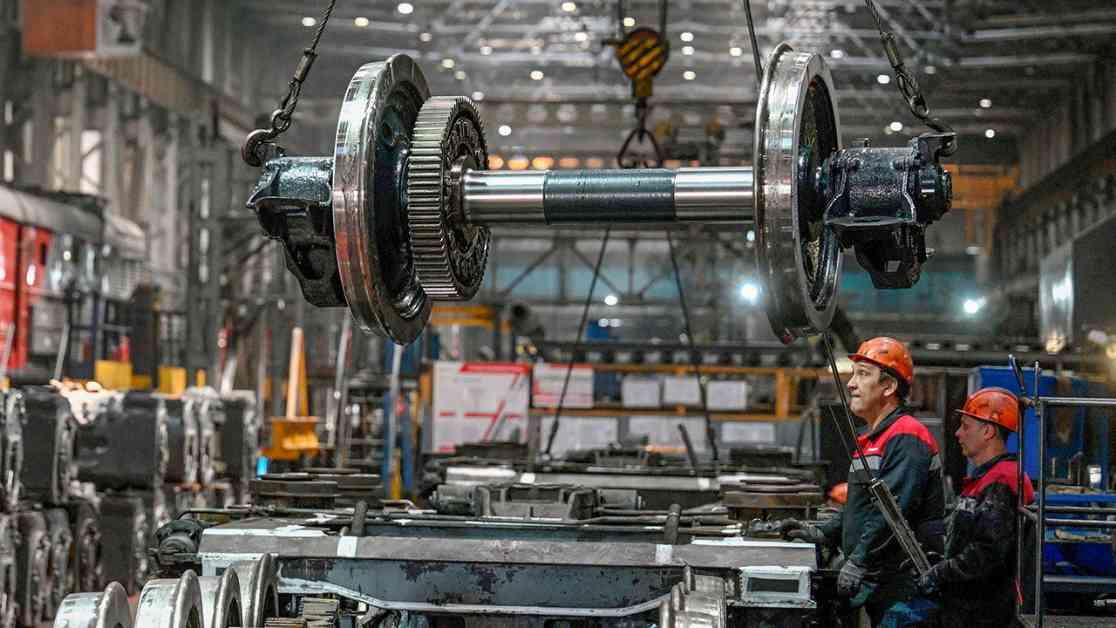Vladimir Putin’s Bold Vision for Russian Trade Transformation
Amidst ongoing tensions with the West, Russian President Vladimir Putin is taking bold steps to reshape his country’s trade landscape. With a focus on strengthening ties with China and India, Putin is making strategic investments in infrastructure to bolster Russia’s economic prospects in the face of Western sanctions.
Investing in the Future
Putin’s decision to allocate over $200 billion, equivalent to 10% of Russia’s GDP, towards the war in Ukraine has raised eyebrows globally. However, the Russian leader sees this as a necessary step to secure the country’s interests in the region. Looking ahead, Putin aims to redirect resources towards infrastructure projects that will enhance Russia’s trade capabilities with key partners in Asia and the Middle East.
One of the cornerstones of Putin’s trade strategy is the planned investment of $70 billion in the construction of transport routes that will connect Russia to vital trade hubs across Asia and the Middle East. The focus will be on developing infrastructure in Russia’s far east and high north regions, areas with immense potential for growth and development.
Furthermore, Putin’s administration is keen on advancing the International North-South Transport Corridor (INSTC), a project that aims to establish a trade route linking Russia to the Indian Ocean via Iran. This initiative holds significant promise for boosting trade between Russia and countries in the Indian subcontinent, opening up new avenues for economic cooperation and growth.
Shifting Focus to Asia
With Western countries imposing sanctions on Russia in response to its actions in Ukraine, Putin is looking towards Asia as a key partner in driving economic growth. China and India, in particular, have emerged as crucial allies for Russia in its quest to diversify its trade relationships and reduce reliance on Western markets.
China, Russia’s neighbor to the south, presents a vast market for Russian goods and services. The two countries have been working closely on various infrastructure projects, including the construction of pipelines and transport routes that will facilitate the flow of goods between them. Putin sees China as a strategic partner in his vision for transforming Russia’s trade landscape, leveraging the country’s economic strength and influence in the region.
Similarly, India holds immense potential for Russia in terms of trade and economic cooperation. The INSTC project, which aims to connect Russia to the Indian Ocean via Iran, is a testament to the growing ties between the two countries. By tapping into India’s vibrant economy and vast consumer market, Putin hopes to strengthen Russia’s foothold in the region and diversify its trade portfolio.
Promises and Challenges
While Putin’s vision for Russian trade transformation holds great promise, it is not without its challenges. The ongoing geopolitical tensions with the West, coupled with economic uncertainties, pose significant obstacles to Russia’s ambitious trade goals. Moreover, the success of infrastructure projects like the INSTC hinges on factors such as political stability, regulatory frameworks, and international cooperation.
Despite these challenges, Putin remains steadfast in his commitment to reshaping Russia’s trade landscape and forging strategic partnerships with countries in Asia and the Middle East. By investing in infrastructure and fostering closer ties with key trading partners, Putin aims to position Russia as a major player in the global economy and ensure its long-term economic prosperity.
In conclusion, Vladimir Putin’s vision for Russian trade transformation reflects a strategic shift towards diversifying trade relationships and reducing dependence on Western markets. By investing in infrastructure projects and fostering closer ties with countries in Asia and the Middle East, Putin aims to strengthen Russia’s economic prospects and secure its position in the global trade arena. As Russia navigates geopolitical challenges and economic uncertainties, Putin’s bold vision for trade transformation serves as a testament to his determination to secure Russia’s future prosperity.

















